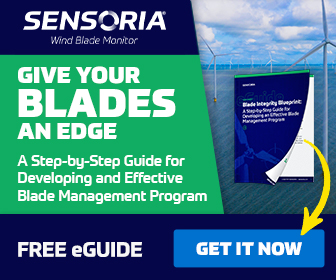After the Fall: Why just wearing fall protection isn't enough
At great heights, maintenance technicians across the US ensure that wind turbines reliably deliver energy to households and industry. According to OSHA standards, employees cannot do without fall protection. In most cases, a rescue device stored on a wind energy plant is also indispensable for their safety. If an accident occurs, personnel with specialist training in rescuing accidents victims may be required.
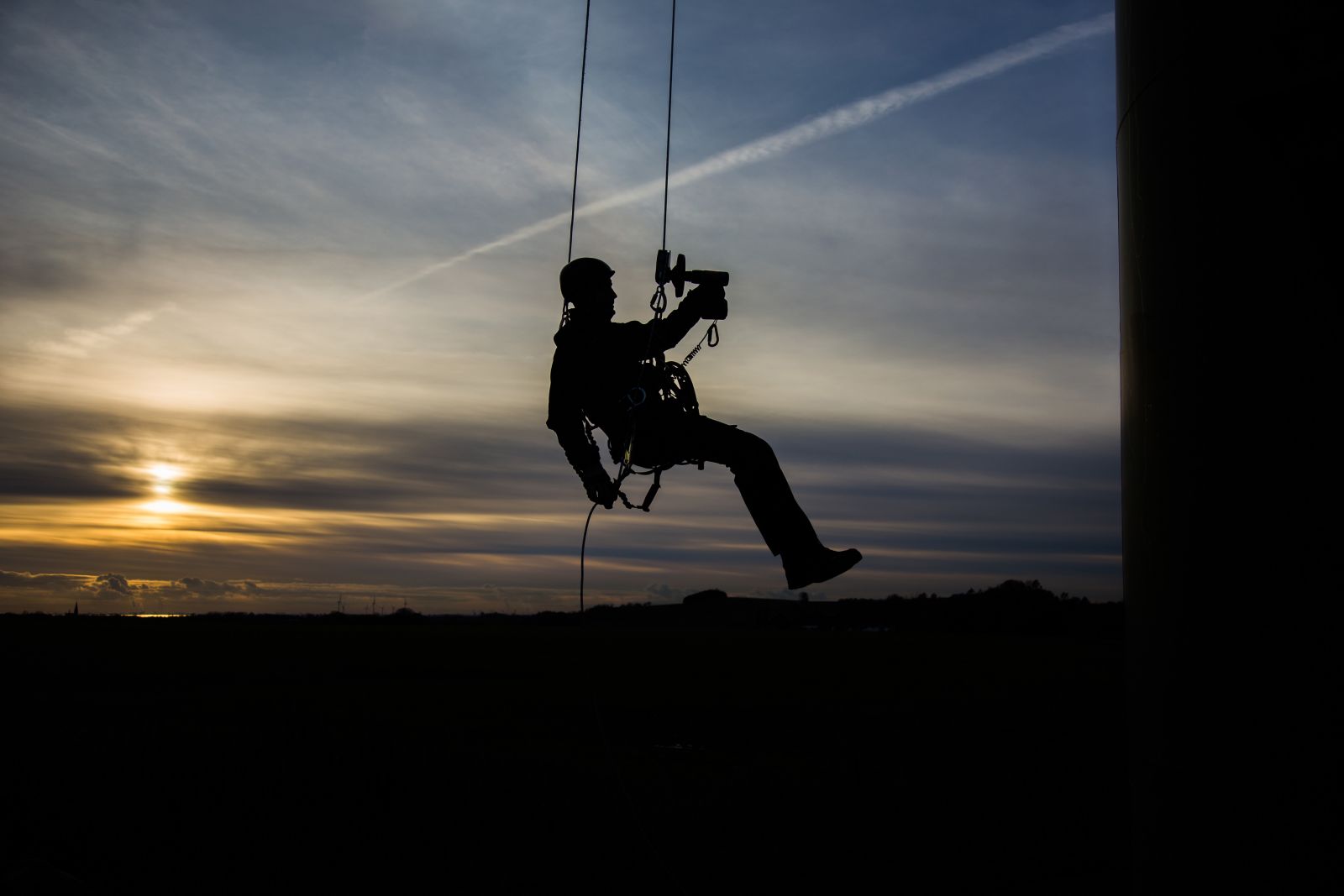
When maintenance or repair work has to be carried out on wind turbines, workers are required to wear fall protection. This is essential in order to protect oneself from the risk of a fatal fall from height when climbing onto wind energy plants, or when working in the nacelle or on the high external surface. When it comes to occupational safety, however, it is not only the employees who are called upon. Rather, the manufacturers, owners or operators of wind energy plants or wind farms or their service companies are responsible for the safety of their employees. This also applies to emergencies - such as when a person has to leave the turbine building quickly at a height of several hundred meters to bring himself and other colleagues to safety.
Rescue and abseiling devices are often used for the self-evacuation and rescue of injured persons. The models equipped with a centrifugal brake have proven their worth by allowing for safe abseiling at a constant speed. Solutions from leading manufacturers allow two employees to abseil simultaneously from great heights outside the tower - up to 500 meters - when a descent inside is no longer possible.
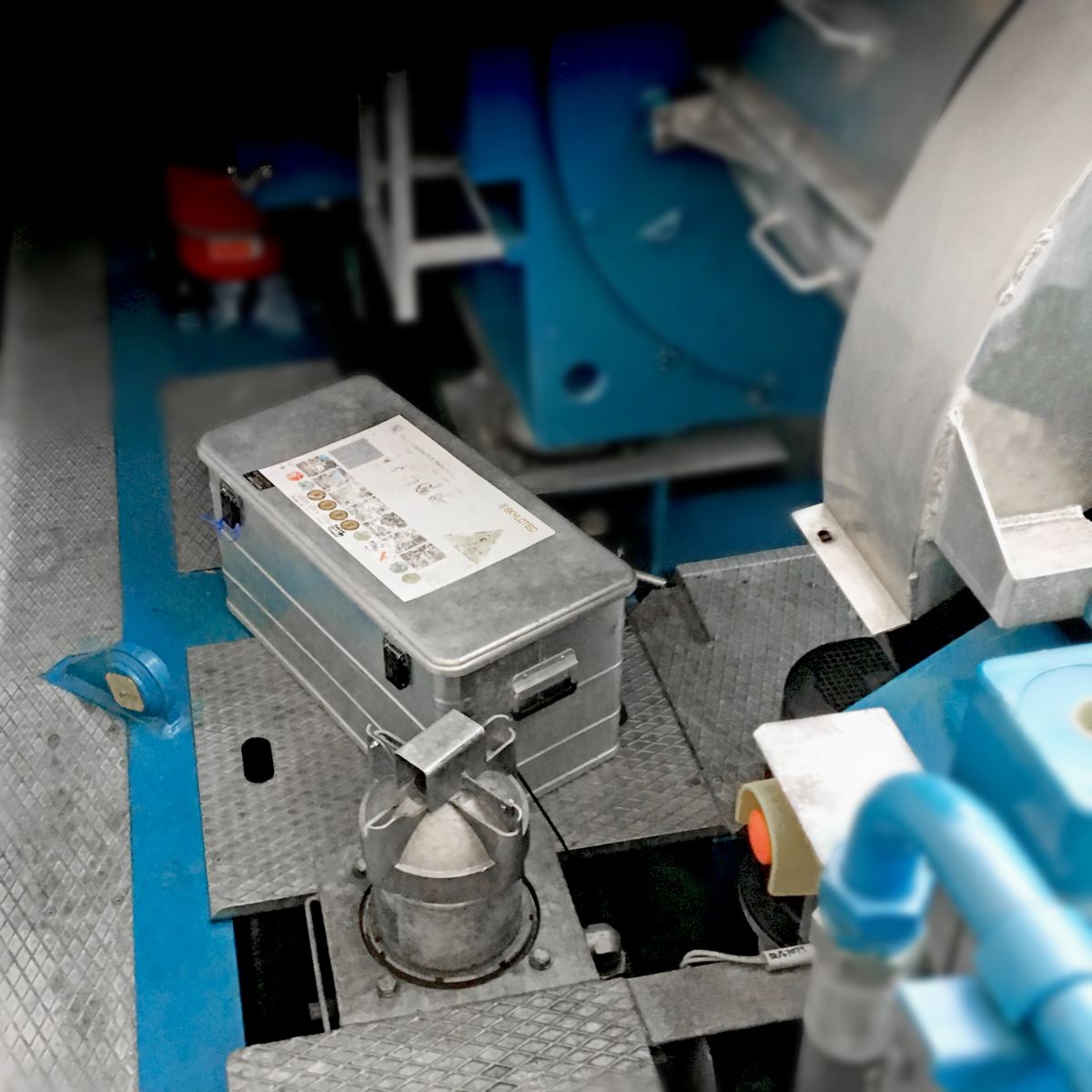 Some rescue devices are stored in a sealed aluminum box directly in the turbine building. If inspected regularly, they be used for up to 15 years. The annually prescribed inspection by an authorized inspector is facilitated by the fact that a moisture indicator on the outside of the vacuum packaging reliably indicates the condition of the device and additionally welded equipment. If this is faultless, the inspector seals the metal box again with a new seal and notes the month and year of the next inspection on it. This procedure is more efficient than sending the rescue device to the manufacturer for annual inspection. If the rescue devices on the wind turbine were to be removed from the plant for inspection, the company responsible for occupational safety would have to provide a replacement rescue device - without rescue equipment, employees are not allowed to enter the plant and work comes to a standstill.
Some rescue devices are stored in a sealed aluminum box directly in the turbine building. If inspected regularly, they be used for up to 15 years. The annually prescribed inspection by an authorized inspector is facilitated by the fact that a moisture indicator on the outside of the vacuum packaging reliably indicates the condition of the device and additionally welded equipment. If this is faultless, the inspector seals the metal box again with a new seal and notes the month and year of the next inspection on it. This procedure is more efficient than sending the rescue device to the manufacturer for annual inspection. If the rescue devices on the wind turbine were to be removed from the plant for inspection, the company responsible for occupational safety would have to provide a replacement rescue device - without rescue equipment, employees are not allowed to enter the plant and work comes to a standstill.
Previously, the service life of rescue devices stored in aluminum boxes was limited to ten years (under optimal conditions), after which they had to be replaced. For companies needing to equip ten or more wind energy plants with this equipment, this ends up costing quite a bit. For this reason, leading manufacturers now offer the possibility to extend the service life for another 15 years without logistical complications and the following conditions: The equipment must be tested and partially replaced by the manufacturer or by one of the worldwide certified service partners; After the inspection, the aluminum box containing the vacuumed rescue device is resealed and can then be used for another 15 years. Very few manufacturers are working on solutions that should make it possible to store rescue devices for almost 30 years, corresponding to the usual service life of a wind turbine.
However, when it comes to dealing with fall protection, regular inspections and their complete documentation are not the only decisive factors. Employers are obliged to develop rescue plans that enable the fastest possible response to any emergency situation. This is essential because wind turbines are usually found in remote locations, making it extremely unlikely that external rescue teams or fire fighters would reach the site in time. Therefore, each company must ensure that accident victims can be rescued by its on-site personnel. The ability to reach accident victims using rescue devices must be mastered by every employee on a wind turbine. For all companies, this is the minimum requirement in terms of their basic rescue concept, which should be based on a risk assessment. Anyone wanting to work as a maintenance technician on wind turbines must therefore also have the necessary knowledge to respond properly in an emergency. For the employees of wind farm operators or companies commissioned to maintain wind turbines, there is no room for compromise: Only personnel who have completed a training course that meets the standards set out by the "Global Wind Organisation" (GWO) should be permitted to work at height in a wind turbine environment. These training courses are provided by training companies or manufacturers of fall protection equipment.
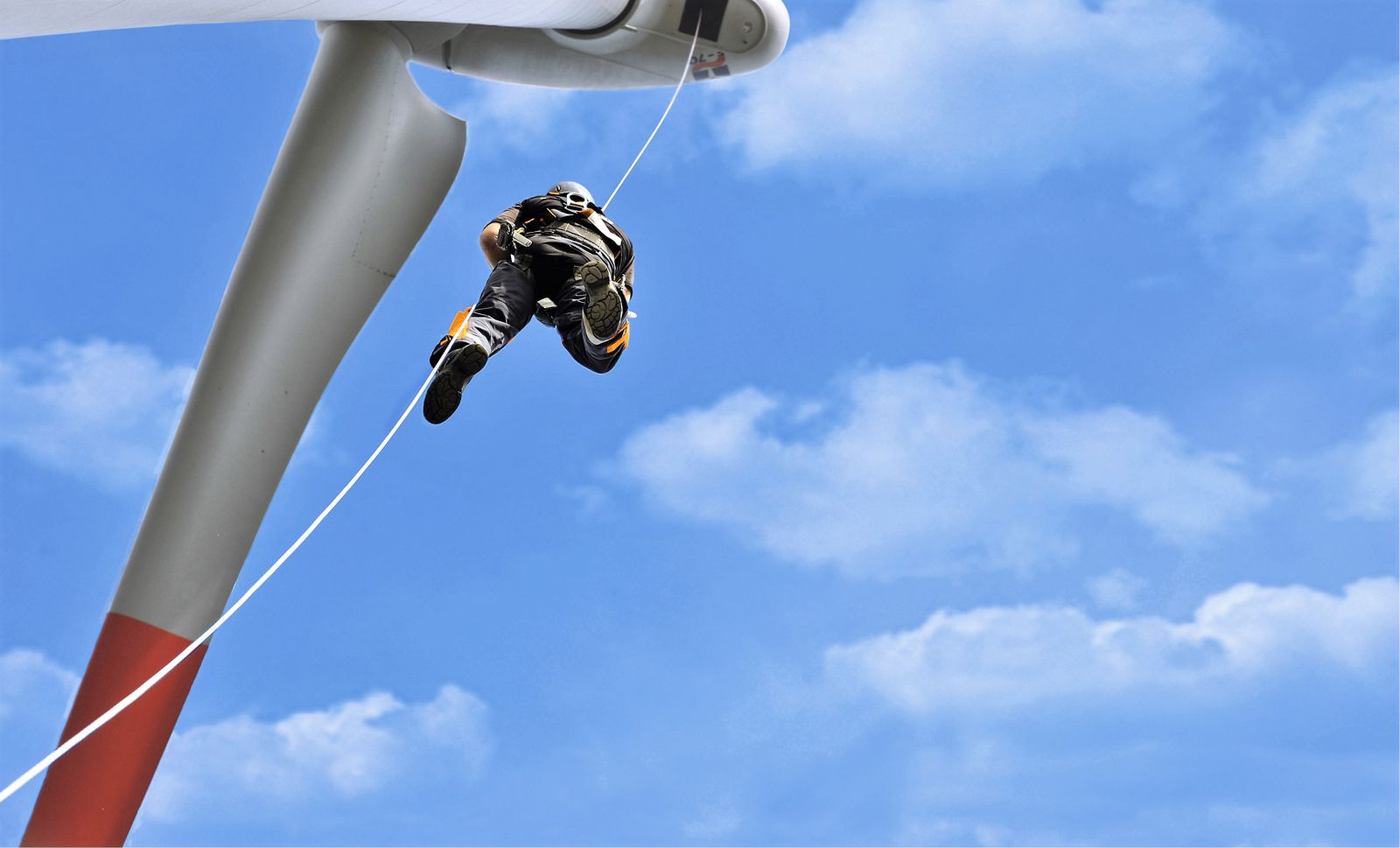
In many cases, a basic rescue concept is no longer sufficient. On wind turbines, employees are required to work in the hub, on a blade, or other places where freedom of movement is limited. These areas are among the most hazardous in terms of occupational safety. If an accident occurs, it may be difficult or impossible for the victim's colleagues to reach him. To make matters worse, there is often no direct line of sight to the casualty. At that point, a rescue team with special equipment and skills must be deployed. In the field of wind energy, some companies have already realised that a basic rescue concept is insufficient if they want to offer the highest possible level of safety to employees working at height - and, therefore, have a need for special training. The GWO has long been tackling the issue of "advanced rescue training" and developed a training course that meets their standards and is certified accordingly. This course is only delivered by a few independent providers. Among other things, this training focuses on scenarios involved in the use of specialist equipment such as pulley systems, fall arrest blocks, and rescue stretchers, without which it would simply not be possible to carry out an advanced rescue.
Colin Holland is a Specialist at Skylotec North America LP, part of a worldwide company that manufactures Personal Fall Protection Equipment and safety systems for sports and industry. Skylotec also offers an international training program from the Vertical Rescue College.
Skylotec | www.skylotec.com
Author: Colin Holland
Volume: 2021 July/August









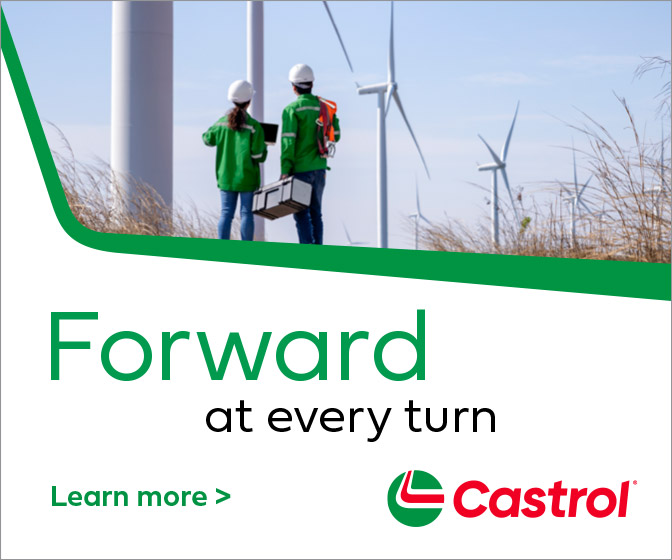
.jpg?r=6431)
